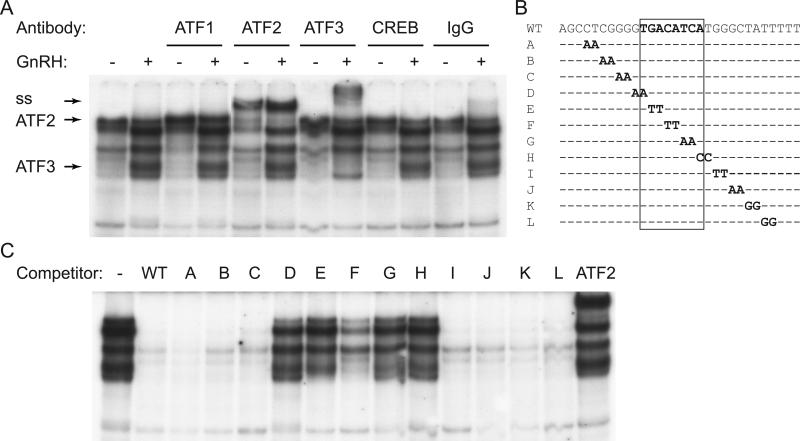Figure 5.
ATF2 binds the CRE site. A, Nuclear extract from LβT2 cells treated with vehicle or GnRH for 1 hour were incubated with a probe that encompasses the CRE site (sequence listed in B) and antibodies to CRE binding proteins. Complexes containing ATF2 and ATF3, and supershift (ss) are indicated with arrows. B, Probe sequence is listed above the mutations that were used in 200 fold excess as competitors in the binding reaction to determine residues needed for binding. Scanning competitors', A-L, sequence was the same except for the two base pairs that are listed. The 8 bp CRE site is designated with a rectangle. C, Mutations listed in B were used as competitors 200 fold in excess of labeled probe in a binding reaction with GnRH treated nuclear extracts. ATF2 lane represents a lane that contains ATF2 antibody instead of competitor.

